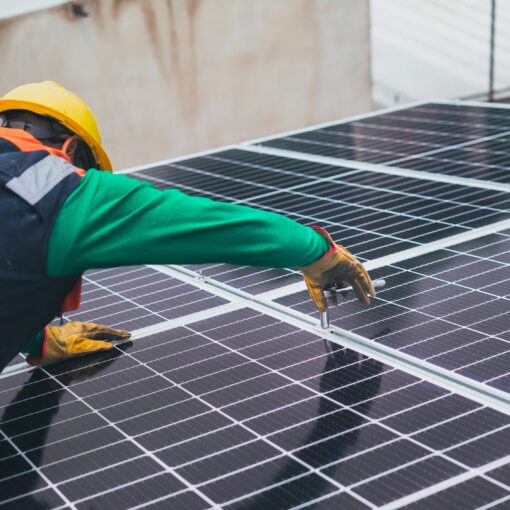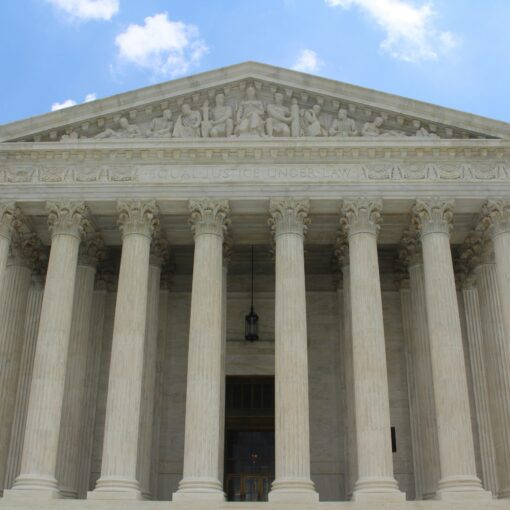 The Inflation Reduction Act (IRA) is chock-full of tax incentives for climate and clean energy projects. This year, 2023, marks the first tax year in U.S. history during which entities that do not have federal tax liability – including local and state governments and agencies, nonprofit organizations, tribes and municipal utilities – can reap the benefit of these incentives. That’s because of the new elective or “direct pay” provision in the IRA that allows nontaxpayers to claim the value of certain tax credits as cash payments (rather than as an offset to tax liability that they don’t have). While many nontaxpayers are keen to take advantage of direct pay, they face significant challenges in doing so. One issue relates to whether and when nontaxpayers can claim the bonus credit amounts promised by the IRA’s renewable tax credits, in particular adders to the clean energy Investment Tax Credit (ITC) codified in Section 48 of the Internal Revenue Code.
The Inflation Reduction Act (IRA) is chock-full of tax incentives for climate and clean energy projects. This year, 2023, marks the first tax year in U.S. history during which entities that do not have federal tax liability – including local and state governments and agencies, nonprofit organizations, tribes and municipal utilities – can reap the benefit of these incentives. That’s because of the new elective or “direct pay” provision in the IRA that allows nontaxpayers to claim the value of certain tax credits as cash payments (rather than as an offset to tax liability that they don’t have). While many nontaxpayers are keen to take advantage of direct pay, they face significant challenges in doing so. One issue relates to whether and when nontaxpayers can claim the bonus credit amounts promised by the IRA’s renewable tax credits, in particular adders to the clean energy Investment Tax Credit (ITC) codified in Section 48 of the Internal Revenue Code.
The ITC offers a tax credit against the cost to build new clean energy projects, including wind, solar and battery storage, from the smallest size (think: solar panels on top of City Hall) to the utility scale (though at this project size, investors will generally choose between the ITC and the Production Tax Credit under Section 45 of the IRC). In theory, up to 70 percent of eligible project costs can be covered by the ITC and its bonus credit amounts. But that is only if all of the bonus criteria are met and – in one instance – an application to the Department of Energy and the IRS is successful. And there’s the rub. Some of these bonus credits are uncertain or difficult to achieve, not only limiting the ITC’s value but making project planning and economic modeling even more difficult for local governments and others wading into renewable energy production for the first time.
The four bonus credits at issue are (1) the prevailing wage and apprenticeship requirements, which if met increase the value of the ITC from 6 percent of eligible project costs to 30 percent (these prevailing wage and apprenticeship requirements are waived for projects smaller than 1 megawatt, which automatically receive the 30 percent credit as a base amount); (2) the domestic content bonus, which offers between a 2 percent and 10 percent bonus credit if certain criteria are met; (3) the energy community siting bonus, which offers between a 2 percent and 10 percent bonus credit for projects sited in brownfields and in certain statutorily defined communities with high unemployment or in which a coal facility has closed in recent decades; and (4) the low-income communities bonus credit, which offers a credit of between 10 and 20 percent of eligible project costs for qualified solar and wind projects built in or that benefit low-income communities. Of these, all but the low-income communities bonus credit are uncapped in the aggregate and noncompetitive for claimants.
All four bonus credits are eligible for direct pay, meaning that nontaxpayers like local governments, government agencies, and nonprofit organizations can collect their value as a cash payment. But these kinds of new players in the clean energy space face significant barriers as they pursue credit amounts beyond the base ITC credits, and some of these barriers are written right into the IRA itself.
The domestic content adder is a prime example of the issue. For taxpayers, the domestic content bonus serves as an extra incentive, on top of the guaranteed base credit amount. But for local governments, nonprofits, and others who will claim direct pay of the credits, the domestic content adder serves as a race against time. This is because for claimants of direct pay only, the domestic content bonus erodes the value of the base credit each year. [Edited to clarify: the domestic content restrictions for claimants of elective pay apply only to projects larger than 1 MW. Smaller projects will be eligible for the full base credit even if domestic content criteria are not met.]
For tax year 2023, direct pay claimants can receive their full base credit amount regardless of whether they also meet domestic content criteria. In other words, the only consequence of not fulfilling domestic content criteria is that the claimant will not receive the domestic content bonus credit. This starts to change in tax year 2024, when direct pay claimants that do not meet domestic content criteria will be penalized with a 10 percent reduction in their base credit amount. In 2025, that reduction in base credit will increase to 15 percent and in 2026, the base credit amount for direct pay claimants that cannot achieve the domestic content requirements will be reduced by 100 percent. This means that local governments and other nontaxpayers wanting to claim the ITC will be required to comply with domestic content requirements starting in 2026. If they can’t, they won’t be able to claim the ITC, even though it is notionally available until 2032. (There is a statutory waiver for instances where U.S.-produced steel, iron or manufactured products would increase the cost of the facility by more than 25 percent, or where such products “are not produced in the United States in sufficient and reasonably available quantities or of a satisfactory quality,” but actionable guidance from the IRS on this point has been limited.)
Effectively, nontaxpayers claiming direct pay have a December 31, 2025 deadline to put projects that do not meet domestic content criteria into service. For-profit renewable energy developers, investment banks, and the other longstanding players in the renewable energy market will have a competitive advantage in that they don’t have to meet the domestic content criteria in order to receive the base credit amounts.
Also sowing uncertainty is the Low-Income Communities Bonus Program, which unlike the ITC itself and the other bonus credits is capped through a competitive application process limited to 1.8 gigawatts of capacity per year in 2023 and 2024 (the program phases out thereafter). The Low-Income Communities Bonus, codified in Section 48(e) of the Internal Revenue Code (IRC), offers up to a 20 percent bonus for projects built in designated geographic areas or that provide at least 50 percent of the financial benefits of the electricity produced to low income households. The issue here is that applicants do not know whether they will receive the bonus credit during the earlier stages of their project planning. Owners or developers of projects that are at least partially planned but that are not yet placed in service will submit applications to the Department of Energy seeking the credit for their projects, which will fall into several “suballocations” of the overall 1.8 gigawatt yearly allocation. If any of the suballocations are oversubscribed within the first 30 days of the application period (which opens on October 19), the order of the Department of Energy’s review of applications will be determined by lottery. While this uncertainty is not limited to claimants of direct pay, it does hit particularly hard on the local, state and tribal governments and nonprofit organizations who are new to renewable energy development and who often have narrower financial margins within which to navigate. The problem is particularly acute in 2023, with the application window opening late in the year. The Department of Energy anticipates updating the guidance for the 2024 program, but the uncertainty and potential for oversubscription remain.
Beyond these statutory barriers, market factors may make some of these bonus credits difficult to achieve. For example, cost and timing constraints have caused concern among developers about challenges to fulfilling the domestic content bonus criteria. So too has the effective requirement that manufacturers be more transparent about the cost of their components in order to calculate the portion of domestic content employed in a given renewable energy project. For-profit project developers have the option not to pursue the domestic content adder, but starting in 2026, direct pay claimants will not. Apprehension has also arisen in the broader market as a result of the timing for receiving word about whether a project will receive the low-income communities bonus credit – project plans must be developed enough to be the subject of an application, but cannot yet be put in service – meaning that “[s]olar installers would have to sell the system and then wait to see if they got the credit before starting work.” And, though they are subject to a “good faith” exception, the apprenticeship requirements will demand a complex dance for project developers and contractors between employing registered apprentices, maintaining applicable journeyman-to-apprentice ratios, and navigating a tight labor market.
For local governments, the uncertainty complicates renewable energy project planning. Most local governments have limited cash to spend on clean energy projects, and the difference between having 70 percent of project costs covered and having only 50 percent covered if the project loses the lottery for the low-income communities bonus credit is significant. Local governments and nonprofit organizations face a similar dilemma to that of the solar installers described in the previous paragraph: they have to scope out the project, engage with service providers, and “sell” it to decisionmakers before they know if they’ll receive the 20 percent bonus.
The way in which the domestic content bonus chips away at the available base credit for direct pay claimants may lead to further snags, as project timelines, escalating domestic content criteria, and the erosion of the base ITC combine to create wildly different credit outcomes if a project is delayed. Anecdotally, I’ve heard stories of local governments pursuing both ITC-funded project plans in the hopes that the project can either be finished by the end of 2025 or can meet domestic content requirements and other models that would allow the local government to offtake renewable power but not to have underlying ownership of the asset, as they would prefer. All of this involves significant work to model and may shut would-be direct pay claimants out of IRA tax benefits entirely.
So what can be done?
- Direct pay claimants: Although this blog highlights structural hurdles to successful implementation of the IRA’s tax credits, nontaxpayers like local governments and nonprofits should not fear using them. The ITC and other tax credits are guaranteed money that can subsidize qualifying projects or add to the capital stack for their successful financing. This is particularly true of projects that are smaller than 1 MW, and therefore are automatically eligible for the 30 percent base credit without fulfilling the prevailing wage and apprenticeship criteria, but also for larger projects built by contractors who are able to navigate these labor rules. The energy community siting bonus is also straightforward, and a number of tools can help project developers determine if an area is or is not an energy community. And the low-income communities bonus program and domestic content adders are also worth pursuing, even if they add some uncertainty. In short, that the IRA could have been better drafted does not mean that nontaxpayers shouldn’t take full advantage. Of course, direct pay claimants should pay attention to all applicable rules, parameters and deadlines, including for obtaining a waiver to domestic content criteria. For projects for which there is both concern about meeting domestic content requirements and the potential for such projects to be placed in service before or during 2025, timely completing the project will preserve some of the tax credit value.
- Federal policymakers: Almost certainly, it will be federal agencies that shape ITC implementation. The domestic content bonus, in particular, offers opportunities for the IRS to waive the applicable criteria if they become infeasible or too costly (an amount pegged at a 25 percent increase in total project cost). The IRS should offer a clear, simple process for obtaining a waiver that does not require direct pay claimants to jump through significant hoops. If the market makes it especially difficult for projects to meet the domestic content criteria, the IRS could even offer a blanket waiver for all projects for a defined period of time. With respect to the low-income communities bonus program, the Department of Energy can make sure that application deadlines are timely and clearly communicated, and that going forward applicants have a clear sense of their likelihood of receiving the credit. Federal agencies could also conduct outreach among contractors and trade associations to ensure that labor and domestic content requirements can be met at scale.
- Technical assistance providers: The upshot of all of this – as with much of the IRA – is that resource-constrained local governments and nonprofits will need help navigating the ITC and its bonus credits. This will include not only legal guidance on the bonus’ criteria and specifications, but also assistance with energy and financial modeling and with finding contractors who can fulfill prevailing wage and apprenticeship and domestic content standards. The need for this sort of assistance is astronomical – even better-resourced governments are capacity constrained, to say nothing of the vast network of smaller or less well-funded local governments, government agencies, and nonprofit organizations that the IRA anticipates being critical to scaling up clean energy nationwide.
The IRA represents the most consequential investment in climate and clean energy in U.S. history. For local governments and other nontaxpayers in particular, the law opens up new opportunities to develop renewable energy projects by significantly lowering the barriers to access the clean energy tax credits that have spurred development in the private sector for nearly two decades. But it does not fully equalize the playing field. An equal playing field would allow direct pay claimants to access the ITC on the same terms as for-profit developers. An equitable one would recognize that direct pay claimants are new to renewable energy investment, learning on the go, and often highly resource-constrained. Access to the ITC via direct pay is good, but additional resources – or at least a streamlining of hurdles – to help claimants capture the full value would truly catalyze ITC uptake among local governments, governmental agencies, and community groups nationwide.
Amy Turner is the Director of the Cities Climate Law Initiative at the Sabin Center for Climate Change Law at Columbia Law School.





